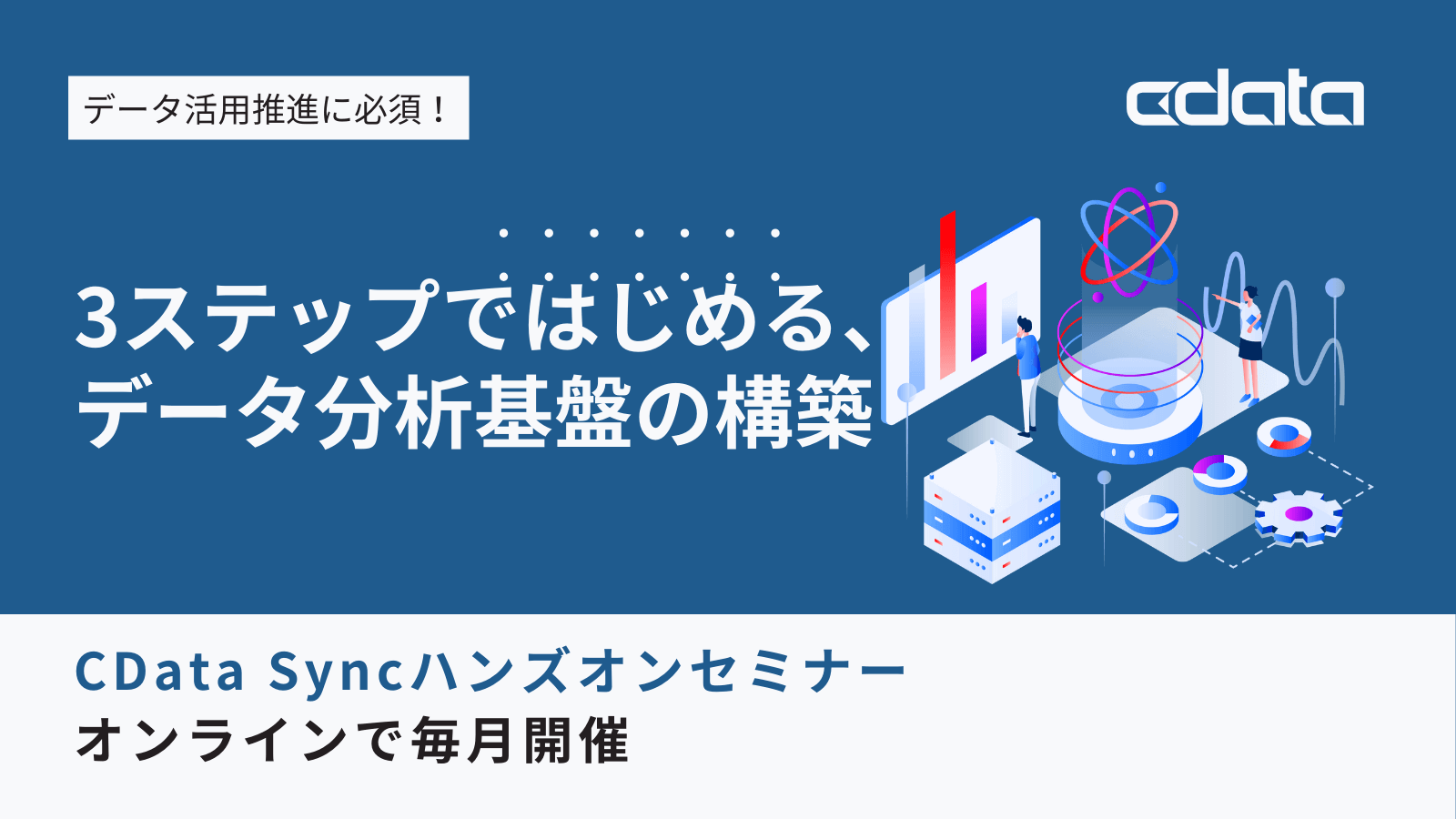ノーコードでクラウド上のデータとの連携を実現。
詳細はこちら →CData Software Japan - ナレッジベース
Latest Articles
- MySQL のデータをノーコードでREST API として公開する方法:CData API Server
- CData Sync AMI をAmazon Web Services(AWS)で起動
- Connect Cloud Guide: Derived Views, Saved Queries, and Custom Reports
- Connect Cloud Guide: SSO (Single Sign-On) and User-Defined Credentials
- Connect Cloud クイックスタート
- Shopify APIのバージョンアップに伴う弊社製品の対応について
Latest KB Entries
- DBAmp: Serial Number Expiration Date Shows 1999 or Expired
- CData Drivers のライセンスについて
- Spring4Shell に関する概要
- Update Required: HubSpot Connectivity
- CData Sync で差分更新を設定
- Apache Log4j2 Overview
ODBC Drivers
- [ article ] CData Software ODBC Driver を使ってMicroStrategy でXero ...
- [ article ] データ変換ツールTranSpeed でAuthorize.Net のデータにアクセスする方法
- [ article ] PyCharm でCData Software ODBC Driver ...
- [ article ] TIBCO Spotfire から、ODBC 経由でSAP ByDesign ...
JDBC Drivers
- [ article ] ETL/ELT のEmbulk を使ってGmail データをDB にロードする方法
- [ article ] Paylocity データをDataSpider Servista の連携先として使う方法
- [ article ] Tomcat Connection Pool にCData Software JDBC Driver ...
- [ article ] FineReport にBカート のデータを連携してビジュアライズ・レポートを作成
SSIS Components
- [ article ] Zuora データからSQL Server に接続する4つの方法をご紹介。あなたにピッタリな方法は?
- [ article ] XML データからSQL Server に接続する4つの方法をご紹介。あなたにピッタリな方法は?
- [ article ] Oracle Financials Cloud データからSQL Server ...
- [ article ] xBase をSSIS 経由でSQL サーバーにバックアップする
ADO.NET Providers
- [ article ] Infragistics WPF XamDataGrid と Airtable をデータバインド
- [ article ] PowerShell からOracle SCM ...
- [ article ] PowerShell からCSV データに接続してデータの更新・挿入・削除を実行する方法
- [ article ] 生産スケジューラFLEXSCHE へQuickBooks からデータを取り込む
Excel Add-Ins
- [ article ] Microsoft Power Query からZoho Creator データに連携してExcel ...
- [ article ] ADO.NET 経由でTIBCO Spotfire でExcel データに連携してをビジュアライズ
- [ article ] Mac OS X 上のMS Excel でExcel Online データを連携利用
- [ article ] Oracle Data Integrator でExcel Online のデータをETL する方法
API Server
- [ article ] AWS Glue ジョブからOData データにJDBC 経由で接続
- [ article ] Delphi のOData データへのデータバインドコントロール
- [ article ] Google BigQuery へのOData データのETL/ELT ...
- [ article ] OData データのAzure SQL への自動レプリケーション。
Data Sync
- [ article ] ローカルCSV ファイルへのXML データのETL/ELT パイプラインを作ってデータを統合する方法
- [ article ] Oracle データベースへのSharePoint Excel Services ...
- [ article ] Amazon S3 へのMicrosoft Planner データのETL/ELT ...
- [ article ] KARTE Datahub からLinkedIn にある顧客情報をCData Sync ...
Windows PowerShell
- [ article ] PowerShell からSAP Netweaver Gateway ...
- [ article ] Zoho Creator データをPowerShell script でSQL Server ...
- [ article ] PowerShell を使ってSalesforce データをSQL Server にレプリケーション
- [ article ] PowerShell を使ってSage 50 UK データをSQL Server にレプリケーション
FireDAC Components
- [ article ] Delphi のMongoDB データへのデータバインドコントロール
- [ article ] Delphi のeBay Analytics データへのデータバインドコントロール
- [ article ] Delphi のSendGrid データへのデータバインドコントロール
- [ article ] Delphi のMarketo データへのデータバインドコントロール






